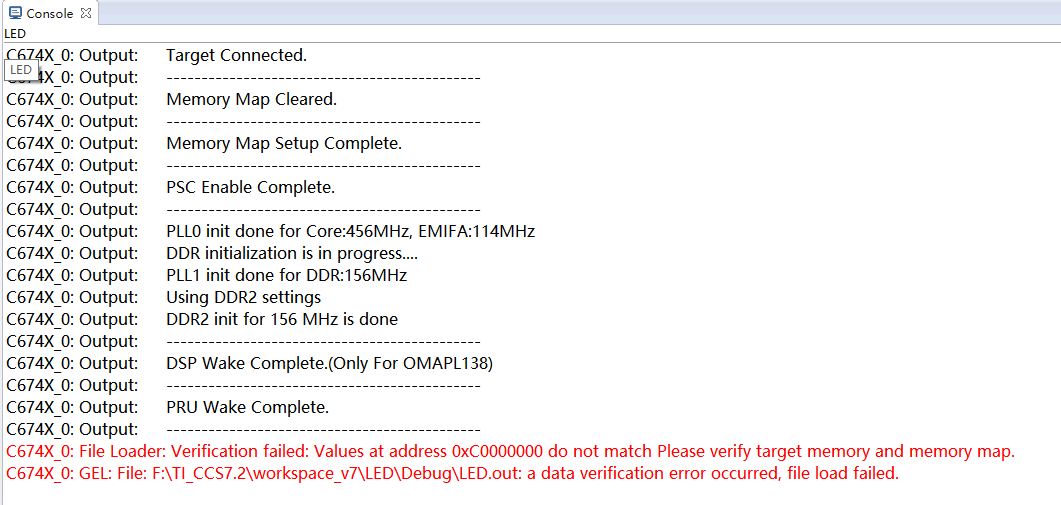Other Parts Discussed in Thread: OMAP-L138,
Tool/software: Code Composer Studio
Hello,
The problem we are encountering now is: after burning the program to nand flash, the board cannot be started after power-on again.
We made a set of boards based on the TI C6748 core board. The nand flash, DDR are the same of TI core boards , and the nand flash is 16-bit. We downloaded the OMAP-L138_FlashAndBootUtils_2_36 from TI official
website, and the nandwidth in nandwriter.c is changed to 16 bits by myself, and it has been compiled and passed. The LED program can be burned into nand flash through the nandwriter.out, and it shows nand boot
preparation successful ! But remove the emulator and set the dial switch to 01110 which is the start bootmode of nand flash. After power on again, the LED light does not light, indicating that the program is not running.
Is it because the GEL file and the AISGEN configuration are inconsistent? I made the two configurations the same, and the initial clocks are the same, and the programming cannot be started, or it may be a cmd
file problem. Can you give a solution? Thank you very much! !



